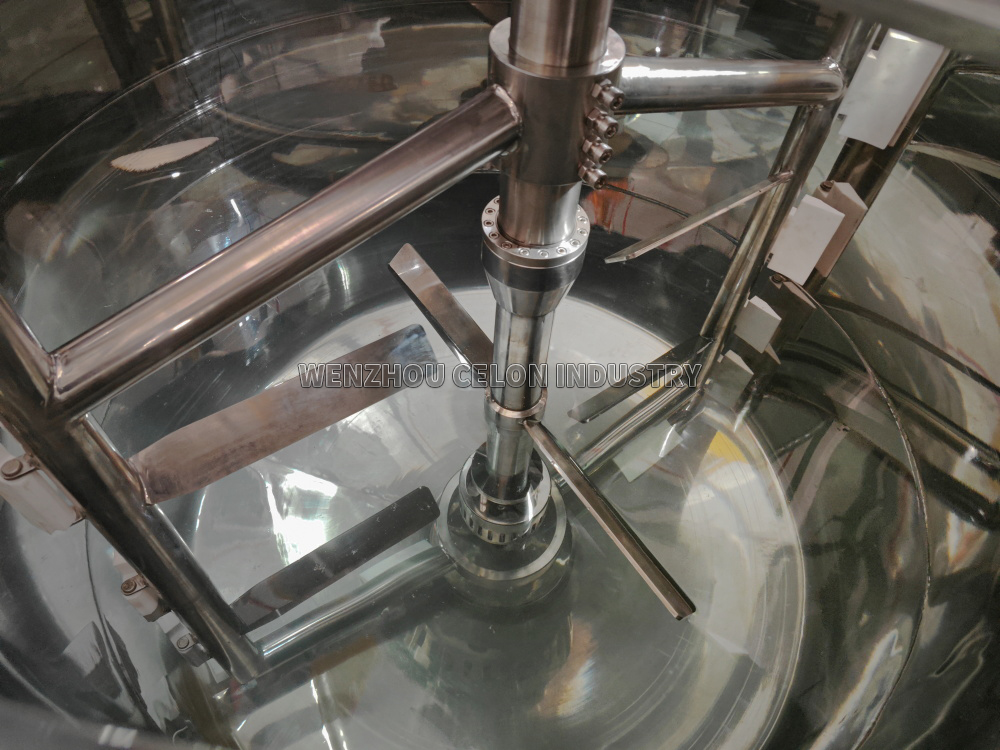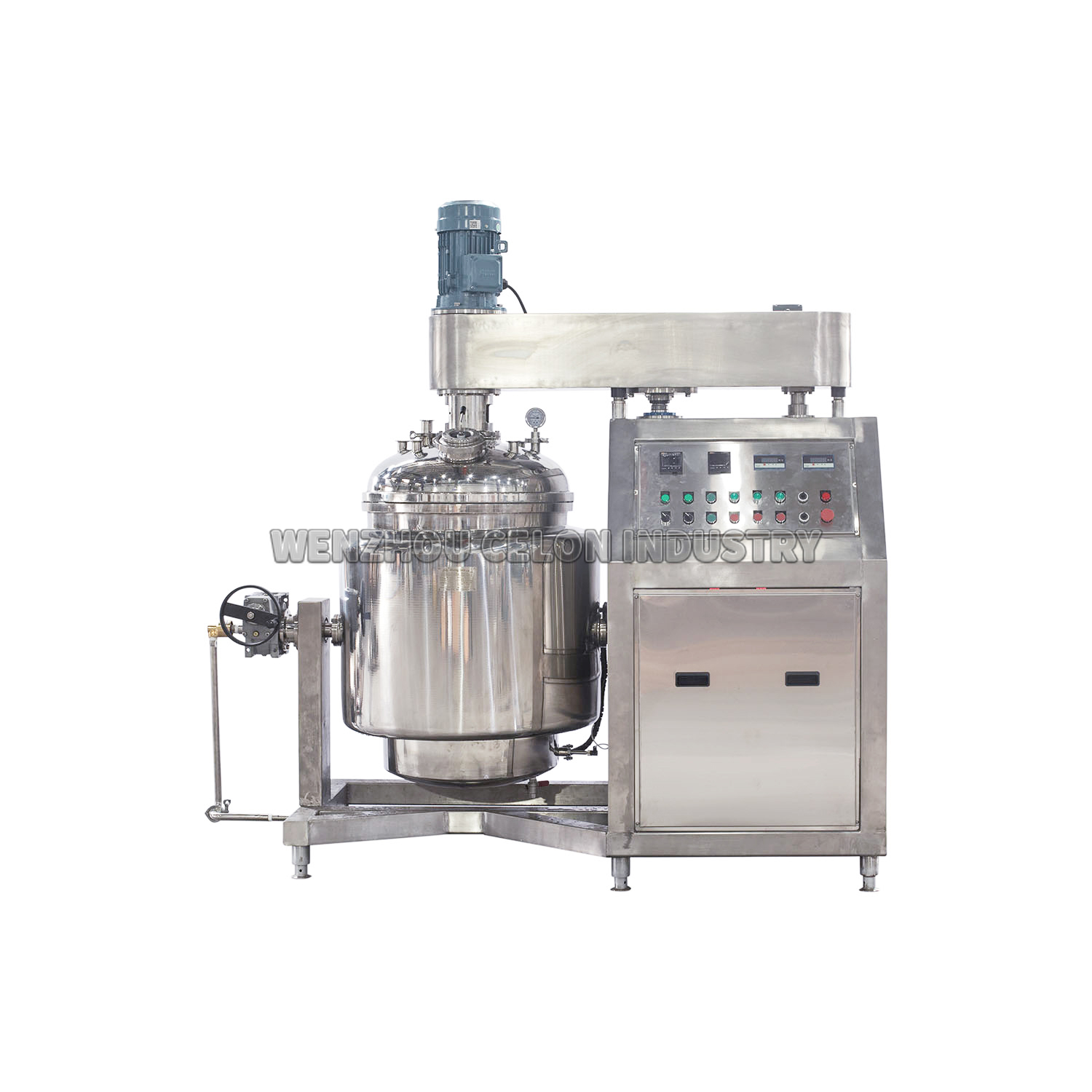How Is Detergent Made in Industry with Industrial Mixing Tanks
How Is Detergent Made in Industry? A Detailed Guide to the Process
Detergents are essential for cleaning everything from laundry to dishes, and their industrial production is a sophisticated process that combines chemistry, engineering, and advanced equipment. At Celon, a leading manufacturer of stirring and emulsifying tanks, we understand the critical role of industrial mixing tanks and industrial mixing machines in creating high-quality detergents.
The Role of Industrial Mixing Tanks in Detergent Production
Detergent production requires precise blending of raw materials to achieve a uniform, effective product. An industrial mixing tank is the cornerstone of this process, providing a controlled environment for mixing, heating, and cooling. Equipped with agitators or high-shear mixers, an industrial mixing tank handles large volumes while ensuring homogeneity. Supporting industrial mixing machines, such as homogenizers or inline mixers, refine textures and stabilize formulations. Celon's industrial mixing tanks, designed with GMP-compliant stainless steel and advanced emulsification systems, are tailored for detergent manufacturing, delivering reliability and scalability.
Ingredients for Industrial Detergent Production
Detergents, whether liquid or powder, rely on a blend of chemical components:
Surfactants: The primary cleaning agents, like linear alkylbenzene sulfonate (LAS) or sodium lauryl sulfate, which reduce water's surface tension to remove dirt.
Builders: Compounds like sodium tripolyphosphate (STPP) or sodium citrate that soften water and enhance surfactant performance.
Enzymes: Break down stains (e.g., protease for proteins, lipase for grease).
Additives: Fragrances, optical brighteners, suds control agents, and preservatives for functionality and appeal.
Solvents or Water: Used in liquid detergents to adjust viscosity.
Fillers: Such as sodium sulfate in powders to standardize density.
These ingredients are carefully measured and blended in an industrial mixing tank to create a consistent detergent formula.
Step 1: Raw Material Preparation and Storage
The process begins with sourcing and storing raw materials, which undergo strict quality checks to ensure safety and performance. Solid ingredients, like STPP or soda ash, arrive in powdered form and are stored in silos, while liquids, such as LAS or caustic soda, are held in tanks. Celon's industrial mixing tanks are often paired with automated dosing systems to precisely measure these materials, minimizing waste and ensuring accuracy.
In an industrial mixing tank, raw materials are pre-weighed and transferred via pumps or conveyors. The industrial mixing tank's robust design handles varying viscosities and densities, making it ideal for this initial stage. An industrial mixing machine, such as a jumbo bag unloading system, may assist in transferring powders to the industrial mixing tank, streamlining the process.
Step 2: Premixing and Neutralization
For liquid detergents, the process often starts with premixing in an industrial mixing tank. Fatty acids or surfactants like LAS are neutralized with caustic soda (sodium hydroxide) or potassium hydroxide in the industrial mixing tank. This reaction, which forms the soap base, is exothermic, requiring the industrial mixing tank's cooling coils to maintain safe temperatures.
Celon's industrial mixing tanks excel here, with integrated temperature control and high-shear industrial mixing machines that ensure a uniform premix. The industrial mixing tank's agitator blends the mixture thoroughly, preventing separation and preparing it for further processing. This step is critical for liquid detergents, as it establishes the foundation for the emulsion.
Step 3: Blending Ingredients
Once the premix is ready, additional ingredients—builders, enzymes, fragrances, and additives—are added to the industrial mixing tank. For liquid detergents, the industrial mixing tank uses a combination of low- and high-shear industrial mixing machines to incorporate water, thickeners, and pH adjusters. For powder detergents, dry ingredients are blended in an industrial mixing tank before further processing.
The industrial mixing tank ensures homogeneity, critical for consistent cleaning performance. Celon's industrial mixing tanks, with capacities from 50 to 5000 liters, feature variable-speed agitators and vacuum systems to minimize aeration, ensuring a stable mixture. An industrial mixing machine, such as an inline homogenizer, may be used to refine the blend, especially for liquid formulations.

High-Shear industrial mixing machine ensures a uniform detergent blend with high-shear precision
Step 4: Post-Processing and Additive Incorporation
After initial processing, detergents undergo post-processing in an industrial mixing tank to add heat-sensitive additives like enzymes, fragrances, or colorful speckles. For powder detergents, this occurs in a separate industrial mixing tank to avoid degradation during spray drying. Liquid detergents may be milled in an industrial mixing tank with an industrial mixing machine to achieve desired viscosity.
Celon's industrial mixing tanks feature slow-mixing capabilities to protect delicate enzymes, ensuring optimal performance. The industrial mixing tank's automated batching systems precisely dose additives, maintaining quality across batches. This step enhances the detergent's functionality and market appeal.
Step 5: Quality Control and Testing
Before packaging, detergents undergo rigorous quality checks in the industrial mixing tank or laboratory. Tests include:
pH: Target 9–10.5 for powder detergents to ensure skin compatibility and cleaning efficacy.
Viscosity: For liquid detergents, ensuring pourability.
Cleaning Performance: Measured by light reflection (98% is ideal).
Stability: Ensures no separation in liquids or caking in powders.
The industrial mixing tank may perform final blending to correct inconsistencies. Celon's industrial mixing tanks, with digital control panels, allow real-time monitoring, ensuring compliance with industry standards. An industrial mixing machine, such as a static mixer, may be used for final homogenization.
Step 6: Packaging
The finished detergent is transferred from the industrial mixing tank to a filling line via pumps. Liquid detergents are filled into bottles or pouches at 100–120°F (38–49°C) to maintain hygiene, while powders are packed into bags or boxes. The industrial mixing tank keeps the product agitated to prevent settling during transfer.
Celon's industrial mixing tanks integrate with automated filling systems, ensuring precision and efficiency. An industrial mixing machine, like a capping or labeling machine, completes the packaging process, preparing detergents for distribution.
Celon's Advanced Industrial Mixing Tanks for Detergent Production

Celon powder detergent mixing tank
Celon, a trusted name in stirring and emulsifying tanks, offers state-of-the-art industrial mixing tanks and industrial mixing machines for detergent production. Our industrial mixing tanks feature high-shear emulsifiers that achieve droplet sizes of 0.2–5μm, ideal for liquid detergent emulsions. With vacuum technology, Celon's industrial mixing tanks reduce aeration, extending shelf life by minimizing oxidation. Available in capacities from 50 to 5000 liters, our industrial mixing tanks are GMP-compliant, made from stainless steel, and equipped with integrated heating/cooling systems for precise temperature control.
Our industrial mixing machines, including inline homogenizers and pneumatic conveyors, enhance automation and consistency. Celon's solutions streamline every stage—from premixing to packaging—reducing waste and boosting efficiency. Whether producing liquid or powder detergents, Celon's industrial mixing tanks deliver the quality and scalability manufacturers need to succeed in a competitive market.
Environmental Considerations
Modern detergent production prioritizes sustainability. Celon's industrial mixing tanks support eco-friendly processes by minimizing energy use and waste. For example, our industrial mixing tanks use efficient agitators to reduce mixing times, lowering power consumption. Manufacturers also replace harmful surfactants like alkylbenzene sulfonate (ABS) with biodegradable linear alkylate sulfonate (LAS) and avoid phosphates to prevent eutrophication. Celon's industrial mixing machines ensure precise dosing of eco-friendly ingredients, aligning with environmental regulations.
Conclusion
Industrial detergent production is a complex process that relies on precision, quality, and advanced equipment. Celon's industrial mixing tanks and industrial mixing machines are at the heart of this process, enabling manufacturers to produce consistent, high-performing detergents. From premixing surfactants to packaging the final product, our industrial mixing tanks ensure efficiency, scalability, and sustainability. Whether you're a detergent manufacturer or exploring the industry, Celon's innovative industrial mixing tanks and industrial mixing machines offer the solutions you need to succeed. Contact us today to learn how our equipment can elevate your production line.